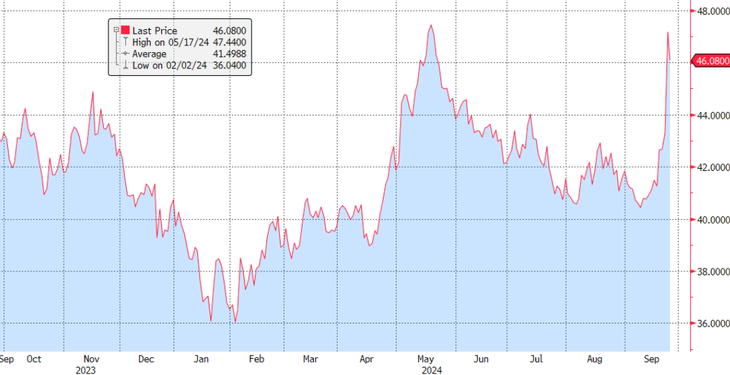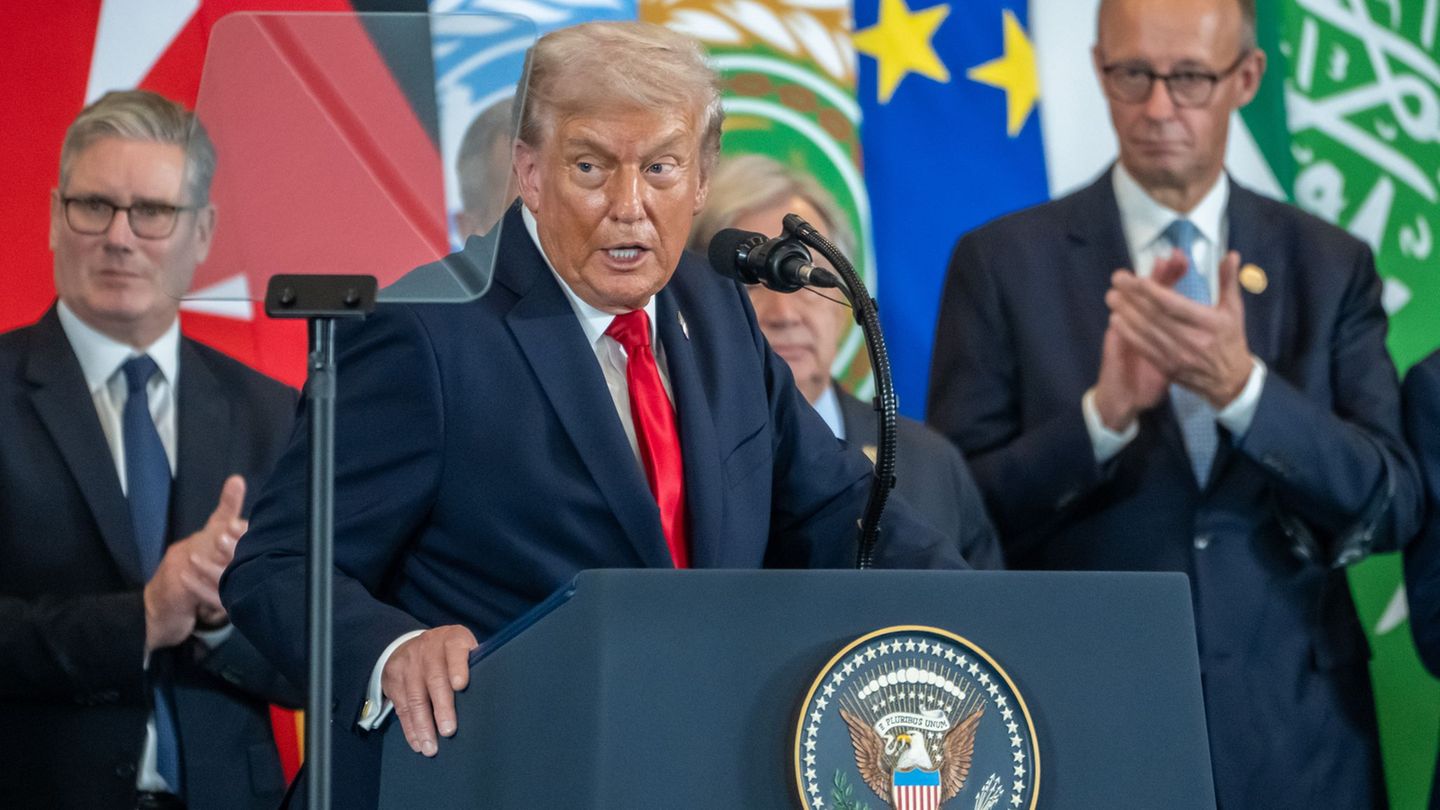The measures come after the Fed’s rate cut
In dialogue with this medium, Gustavo Neffapartner of Research for Tradershighlights, in line with what was stated by Sniechowski, that the recent reduction of 50 basis points in interest rates by the Federal Reserve (Fed) of the US, together with the strengthening of the yuangave the chinese central bank an opportunity to make its monetary policy more flexible. “This allowed the PBOC to act without undue concern for the stability of the currency,” That is, the context was ideal.
And as Neffa highlights, the monetary entity reduced the interest rate on loans from the one-year medium-term financing mechanism (MLF), which went from 2.3% to 2%, which represents an approximate total of US$42,660 million. Furthermore, Neffa maintains that the one-week interest rate (reverse repos) was adjusted from 1.7% to 1.5%. To strengthen confidence in the banking system, commercial banks will be able to reduce their reserves by 0.5%, which will free up around $142 billion in loans to businesses and households and could be followed by another cut of 0.5%. .25-0.5% later this year.
China.png
Chinese performances. source: Bloomberg.
The analyst indicates that a relaxation is also anticipated in the requirements for bank loans intended for the repurchase of shares, in line with what is proposed Sniechowski, which add up to around US$43,000 million. “Together with the announced stimulus package, these measures will facilitate access to more than $300 billion in capital,” says Neffa.
For the Research for Traders strategist, the timing of this monetary intervention is significant. Well, it is likely that the PBOC waited for the Fed to start cutting rates first, “in order to mitigate the risk of international capital flight.”
Cedears: which sectors benefited from the Chinese stock market rally?
Sniechowski maintains that clearly all these measures promoted in China aim to sustain and boost consumption, “put a floor to the crisis in the Real Estate and try to sustain a growth rate of at least 5% of GDP.” For the expert, lowering rates, together with an expansive monetary policy (QE) point in the same direction. With which, “Perhaps the sectors that will benefit most in the short term are those related to consumption“.
Neffa, meanwhile, maintains that the PBOC’s recent measures go beyond simple interest rate cuts, encompassing a series of actions to support different economic sectors. Among them, the reduction of the reserve ratio, adjustments in mortgage terms and liquidity support for share repurchases stand out, “which demonstrates its commitment to the economy“, he indicates.
In it real estate sectorthe reduction of mortgage rates and lower down payment requirements seek to reactivate the housing market, although general pessimism could delay the recovery, the strategist believes. “In financial markets, support for the stock market and possible share buybacks could stabilize valuations, attracting opportunistic investors. Likewise, the release of liquidity for banks and brokers aims to encourage loans and investments in risky assets”analyze.
For the analyst, the key now lies in the effective execution of these measures and the coordination with additional fiscal policies. “While investors, skeptical after previous failed attempts, may be cautious, attractive valuations and signs of stabilization could revive interest in the markets.”he assures. Nevertheless, the elections in the USA and the possibility of new tariffs on China represent a significant risk that could mitigate the positive effects of this economic stimulus.
The impact on the global market of the change in perspective in China
Neffa estimates that China’s economic stimulus could have a positive impact on markets, boosting prices of raw materials such as metals and energy, which would benefit Contracts for Difference (CFDs) in commodities like copper and oil. Chinese stock indices, such as CSI 300, They could also see a short-term increase thanks to greater liquidity, becoming attractive for bullish trades.
In the foreign exchange market, the yuan could experience downward pressurecreating opportunities in pairs like the USD/CNY. In addition, interest in stocks linked to China is increasing, “benefiting European indices such as the DAX, as well as US futures and gold, which reach new all-time highs,” says Neffa.
Thus, Neffa emphasizes that, although it can be expected some profit taking, “there are currently no strong bearish signals to suggest that a market top is imminentIn fact, they seem to find more reasons to continue investing or even increase their exposure, as central banks not only reduce interest rates but also introduce new stimulus measures.
Cedears: which ones are the experts looking at?
For Sniechowski, The impact on the global market is important. At the variable income level, China has a very large weight in the emerging markets ETF (EEM). As seen in the graph, the behavior of the China ETF (MCHI) explains the movements of the EEM with much greater significance than that of India (INDA), Mexico (EWW) and Brazil (EWZ), among others.
In that sense, the IEB Group strategist believes that the best positioned stocks for this “good“moment of chinese equity They are those that have to do with consumption, such as: Alibaba (BABA), JD.com (JD), and perhaps electric vehicle maker NIO (NIO). And slide that, “a bet is also to invest directly in the China ETF (MCHI),” although it cannot be operated like Cedear.
Finally, and given the weight that China has in the EEM, an alternative would be to use said vehicle (which Cedear has) to bet on the recovery of China and -eventually- Brazil (country whose variable income has also been severely punished).
MCHI.png

A bet is also to invest directly in the China ETF (MCHI). Source: Bloomberg.
And for investors seeking diversification beyond developed markets, “Chinese policies can offer opportunities”as maintained by Neffa, who recalls that China ETFs have shown volatility this year, with a peak at the end of May driven by stimuli, positive economic data and better trade relations with the US. “Among the options are the iShares China Large-Cap ETF (FXI) of $4 billion and the Morgan Stanley China A Share Fund (CAF) of $260 million.”
Tencent Holdings (TCEHY)with a 49% increase in its shares this year, leads the category of video games and has made significant investments in artificial intelligence. “In addition, it plans to double its share buybacks in 2024, after spending US$6.71 billion in the first half of the year”, a fact to follow closely.
Thus, investors, cautious after previous attempts, now see a window of opportunity amid attractive valuations and signs of stabilization. Although structural challenges persist in the Chinese economy, like debt and deflationcurrent policies show a clear path to recovery.
However, the overall impact of these measures will depend not only on their execution, but also on external factors such as elections in the US and the possibility that the trade war between powers will worsen.
Thus, China not only seeks to reactivate its economy, but also its influence in world markets. Perhaps we are on the threshold of a change in the investment paradigm, where the success of these policies could transform the global landscape and create opportunities that the most daring investors will not want to miss.
Source: Ambito
I am a 24-year-old writer and journalist who has been working in the news industry for the past two years. I write primarily about market news, so if you’re looking for insights into what’s going on in the stock market or economic indicators, you’ve come to the right place. I also dabble in writing articles on lifestyle trends and pop culture news.




